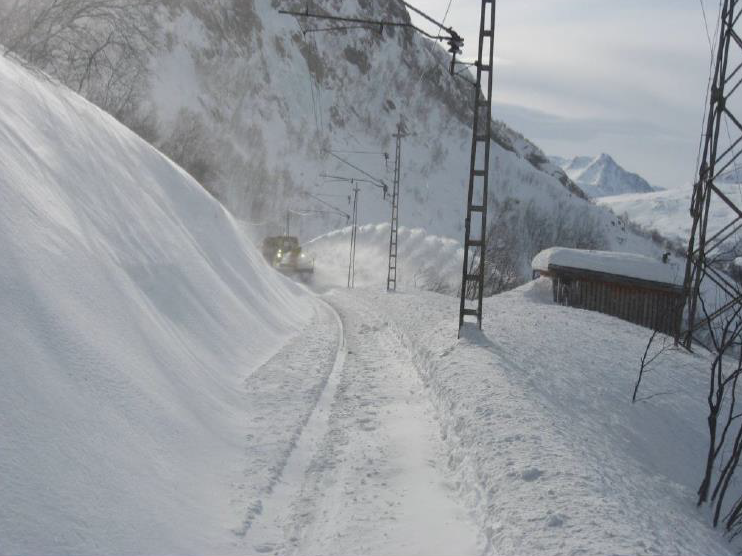The railway infrastructure has a central role in the Kolarctic region and enables efficient transportation of ore, timber, goods and passengers both inside and out of the region. In Europe and in the Kolarctic region, there is an increasing demand for the railways to be better utilized through heavier, longer, faster and more frequent trains. This, together with the harsh arctic conditions, causes certain requirements for the railway infrastructure.

The project ARINKA has developed a cross-border railway research and development collaboration on the Kolarctic region. The project has exchanged railway technical know-how and best-practice solutions with the goal of making the Kolarctic railway more reliable.
The railways in the Kolarctic region, which includes the railway lines in the North Calotte and
North-West Russia, were built in the early 1900s. Although the railways have been upgraded over the years, much of the railway substructure consists of elements from the time when the railway lines were built. Therefore, there is a mismatch between the existing infrastructure and the expected increase in railway traffic. Increased load at the tracks also involves greater wear, which means more frequent errors and more extensive maintenance requirement. Increased uptime and punctuality will also require increased use of monitoring systems, so that errors can be uncovered earlier, and that maintenance and repairs can be carried out at the right time and in a most cost-effective way.
The project has gathered solutions to make the railways more reliable, in numerous mappings and reports, which are about
- robust rail infrastructure solutions,
- more cost-effective maintenance and repair operations, and
- railway infrastructure monitoring through advanced sensor technology solutions.
Project: Arctic Railway Infrastructure in Kolarctic (ARINKA)
Lead partner: Northern Research Institute Narvik
Other partners:
- Luleå University of Technology
- Trafikverket, Luleå
- Bane NOR, Hamar
- Lapland University of Applied Scienses, Rovaniemi
- Finnish transportation Agency, Oulu
- Federal State Budget Educational Institution for Higher Educational “Empreror Alexander I St. Petersburg State Transport University”, St. Petersburg
- Kola Science Center of the Russian Academy of Sciences, Apatity
- October Railway – Branch of Joint Stock Company “Russian Railways”, Murmansk
